Here's Why Your Hydrangea Didn't Bloom
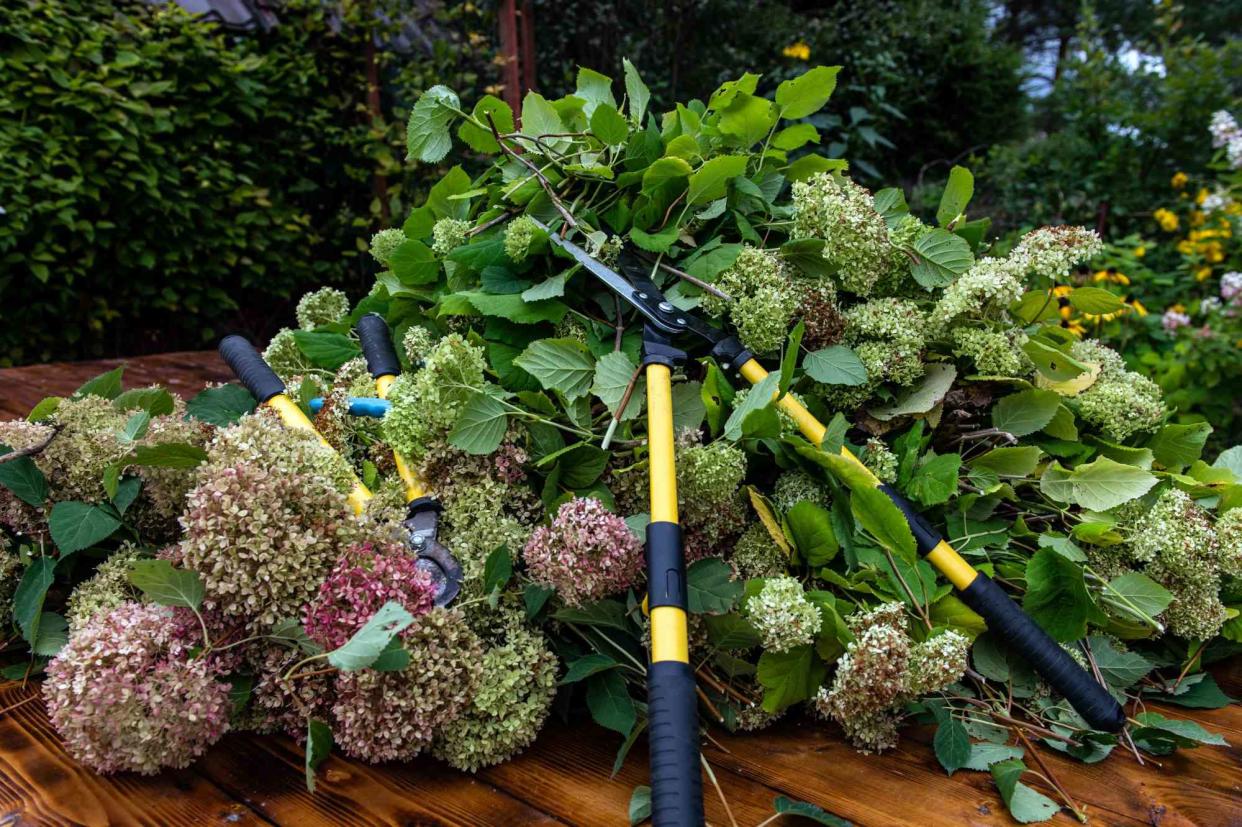
Many people across the land are disappointed when their hydrangeas turn out to be a total flop. Their neighbor's dreamy hydrangeas are blooming and beautiful, but their hydrangeas have barely any flowers or none at all. They're afraid their shrubs' lack of cooperation is either a sign of displeasure from the Big Guy or because their neighbors have an incredibly green thumb.
If you're among those unhappy folks, relax. When hydrangeas don't bloom, it's almost always due to one or more of the following reasons:
Your hydrangea isn't getting enough sun.
The flower buds were killed by a late winter freeze.
Your hydrangea doesn't like where it's growing.
Your hydrangea hasn't bloomed yet this year, but it will.
Now that you know why hydrangeas don't bloom, now let's consider the main classes of popular hydrangeas (French, smooth, panicle, and oakleaf) and see how these five factors impact each kind.
How To Get Hydrangeas To Bloom
In order to avoid mistakes with pruning, sun exposure, or planting your hydrangeas, you first need to know which kind you have. Below we identify each of the major hydrangea types grown in the South, along with what you need to know about when they bloom, when to prune them, how much light they need, and how much to water them. Using this knowledge, you can be sure your hydrangeas will be loaded with beautiful blooms.
French Or Bigleaf Hydrangea (Hydrangea macrophylla)
Let me get the name out of the way first. French hydrangeas come from Japan, not France. They're called French because many selections of this species were made and named in France. Due to their incredibly gaudy clusters of blue, purple, pink, or white flowers, they're the South's most popular kind. Here's what you need to know about blooming.
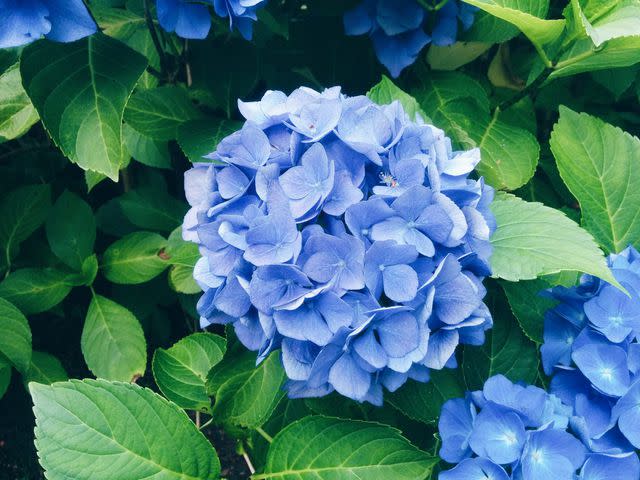
When They Bloom: Older, once-blooming selections like 'Nikko Blue' shown in the photo up top, bloom for six to eight weeks, starting anywhere from late spring to midsummer, depending on your location and the selection. Newer, repeat-blooming types ('Endless Summer,' 'Forever & Ever,' 'Mini-Penny,' 'Twist n Shout,' 'Let's Dance') bloom repeatedly from spring until fall if they're happy, well-watered, and actively growing.
How Much Light: They bloom best if given sun in the morning and a little light shade in the afternoon, particularly during the hot summer. If you plant them in all-day shade, they won't bloom.
How Much Water: French hydrangeas are water hogs. Due to the huge amount of water transpired by their large leaves during hot weather, they wilt in a flash. You may have to water them as often as every other day in the South in summer if it doesn't rain. Repeat-bloomers will not repeat bloom if they go dry. Obviously, French hydrangeas are not good plants for low-rainfall areas.
What Kind of Soil: Rich, fertile, well-drained soil containing lots of organic matter to retain soil moisture. Acid soil (below pH 7) gives blue or purple flowers. Alkaline soil (above pH 7) gives pink or red blooms. White French hydrangeas stay white no matter the pH.
Where Not to Plant: Don't plant in poor, rocky, dry soil. Don't plant at the foot of big shade trees that compete with them for water and nutrients.
When to Prune: Once-blooming types flower from buds made last year. If these buds are killed by a late freeze or cut off by mistake, you don't get blooms. So prune the once-bloomers very lightly. Remove any dead growth in early spring. Shorten live branches only in summer immediately after the blooms fade. Repeat-bloomers, on the other hand, bloom on buds made last year and the current year. So even if a freeze killed last year's buds or you pruned the plant to the ground this spring, they'll still make new flowers this year. Just remove old blooms as they fade.
Smooth Hydrangea (Hydrangea arborescens)
Native to the South, smooth hydrangeas are less fussy, more cold-hardy, and easier to grow than the French ones. 'Annabelle' (below) is the most popular selection because of its huge white flowers. New pink-flowering types, such as 'Bella Anna' and 'Invincibelle Spirit,' are now heavily promoted.
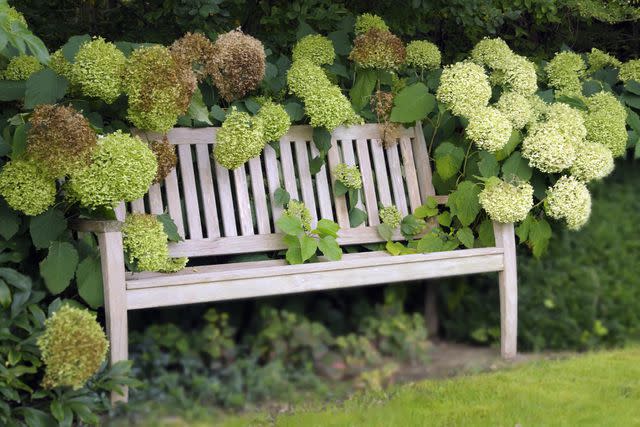
When They Bloom: About the same time as the French hydrangeas. They'll bloom later if pruned in spring.
How Much Light: They take more sun than the French, but morning sun and light, afternoon shade in the South is still a good rule.
How Much Water: They prefer moist soil, but don't need as much water as the French.
What Kind of Soil: Fertile, well-drained; pH doesn't really matter unless you live in a peat bog or lime pit.
Where Not to Plant: In full shade under big trees.
When to Prune: Smooth hydrangea blooms on new growth. Prune in winter or early spring. If you prune it back severely, you'll get massive flowers, but fewer of them. These big blooms may need support.
Panicle Hydrangea (Hydrangea paniculata)
Native to Japan and China, this is the toughest and most accommodating species described here and a great one for beginners. It tolerates heat, drought, full sun, and bitter cold. In fact, Grumpy considers an old-time favorite, the treelike 'Pee Gee' or 'Grandiflora,' the crepe myrtle of the North. "Pee Gee' grows up to 20 feet tall, blooms in summer, and thrives all the way to Canada. 'Limelight' (below) is a more compact, bushy plant growing 5 to 8 feet tall with upright blooms that age from whitish-green to pink. Dwarf selections like 'Bobo' can top out at 3 feet.
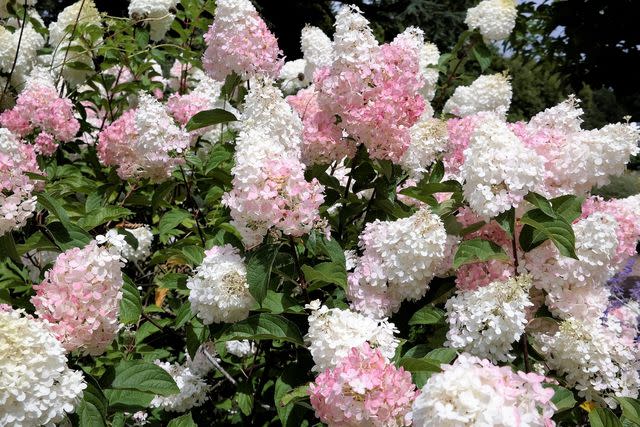
When They Bloom: Summer into early fall. The flowers of most turn from white to pink or rose as they age.
How Much Light: Full sun preferred
How Much Water: Likes moist soil, but tolerates drought. Needs much less water than French.
What Kind of Soil: Well-drained
Where Not to Plant: Shade (it won't bloom)
When to Prune: Blooms on new growth. Prune in winter or early spring.
Oakleaf Hydrangea (Hydrangea quercifolia)
Native to the Southeast, this is a unique hydrangea in several ways. It likes shade and will even bloom in the woods. It's the earliest to bloom of the species described here. Its oak-shaped leaves turn red, orange, yellow, and burgundy in fall. And it's far easier to grow than the French. In some of the newer varieties, as each flower cluster ages, stacks of new florets open atop the old ones. The new ones open white, while the old ones turn rose, giving a beautiful bicolored effect. While many oakleaf hydrangeas grow 7 or 8 feet tall, there are dwarf varieties that only grow 3 to 4 feet tall.
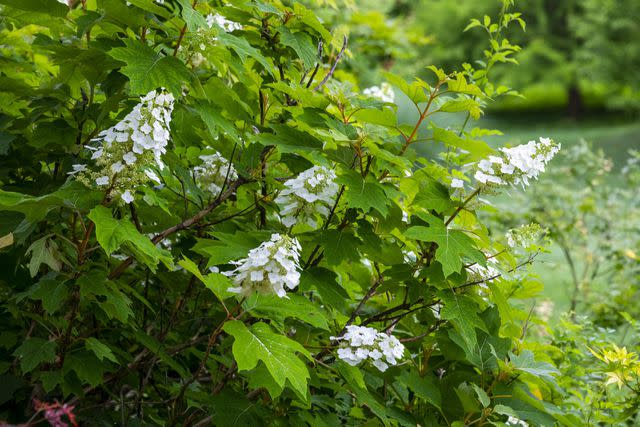
When They Bloom: Usually start in mid-to-late spring and continue into early summer.
How Much Light: Dappled sun to shade.
How Much Water: Does well in moist soil, but tolerates drought very well.
What Kind of Soil: Well-drained, acid soil containing lots of organic matter.
Where Not to Plant: Full sun; near hot, paved surfaces; in alkaline soil (foliage turns yellow between the veins); in poorly drained, heavy soil.
When to Prune: Blooms on growth made the previous year. Seldom needs pruning, but if you must, do it in early summer.
For more Southern Living news, make sure to sign up for our newsletter!
Read the original article on Southern Living.

